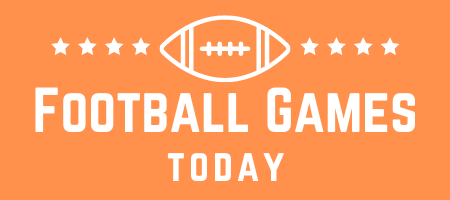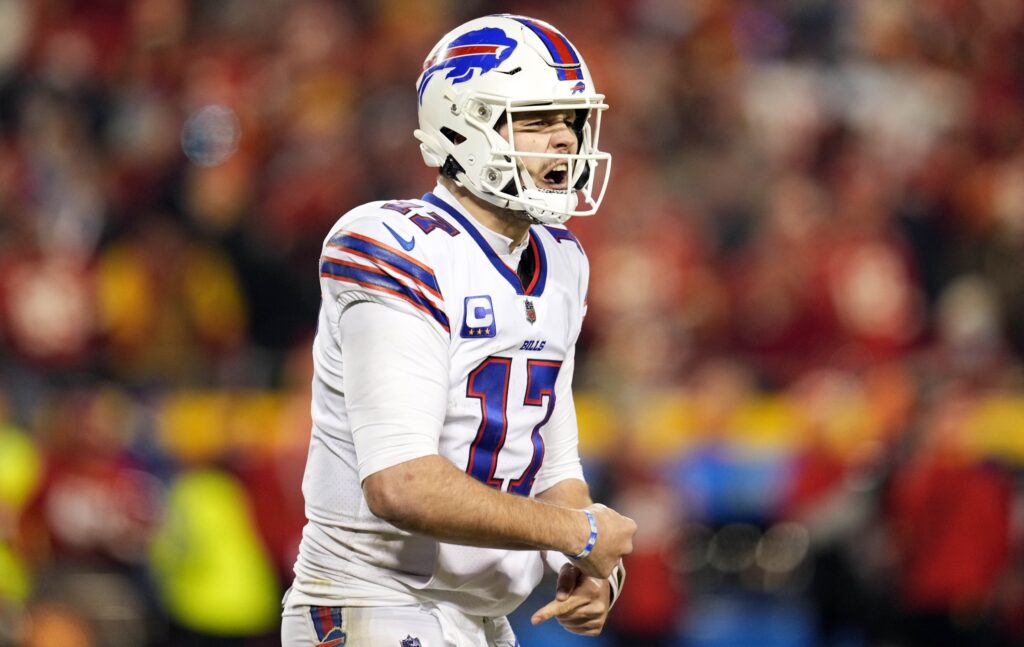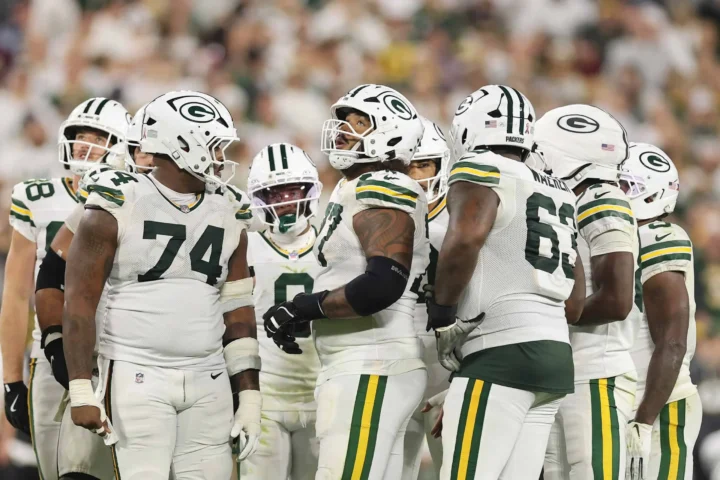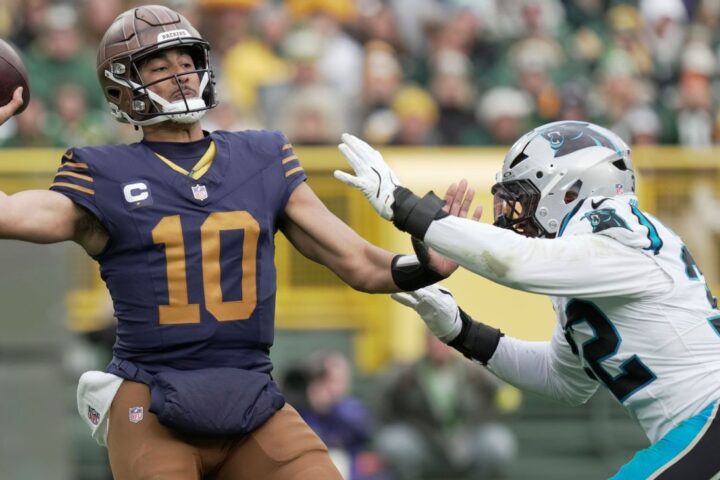For most of fantasy football’s existence, there hasn’t been much for managers to do during the spring and summer months. After the NFL Draft in late April, there’s typically nothing to do until fantasy draft season in mid-August. Now, we have Best Ball to help scratch that draft itch throughout the offseason. For those new to the format, here is a basic primer on how to construct a fantasy football Best Ball roster.
What Is Fantasy Football Best Ball?
Before we get into specifics about roster construction, here’s a quick explanation of what fantasy football Best Ball is and how it differs from your more common seasonal league.
Best Ball doesn’t differ much at all when it comes to starting positions and scoring. The biggest difference there is the absence of kickers and defenses.
MORE: FREE Mock Draft Simulator With Trades
If you play Best Ball on Underdog (which you should), rosters consist of 18 players, which is really 4-5 more than seasonal rosters due to the lack of kickers and defenses. The primary difference is there is no need for lineup management.
In Best Ball, the platform will automatically optimize your lineup each week. That is, your highest-scoring players at each position go into your lineup. The upside is you can never get a lineup decision wrong because there aren’t any.
The downside is if you draft busts or sustain injuries, those become wasted roster spots, as there are no roster moves. Once you draft your team, that’s it. The season is the same length as regular fantasy football leagues (17 weeks), and the highest-scoring teams win (typically, the top three get paid).
How Do You Construct a Fantasy Football Best Ball Roster?
Much like seasonal fantasy football, there are various different strategies and approaches fantasy managers can take when constructing their Best Ball rosters. But unlike seasonal leagues, strategies predicated upon streaming positions or figuring it out as the season progresses are not possible.
That means waiting on quarterback and tight end with the goal of finding one on the waiver wire, or streaming each week, is not viable. That doesn’t mean you necessarily need to spend premium draft picks on those positions — it just means you can’t bank on finding one as the season goes.
On Underdog, a starting roster consists of one QB, two RBs, three WRs, one TE, one Flex, and eight bench spots.
Since fantasy managers need to maximize their weekly points, you can’t only draft one quarterback or one tight end. In seasonal leagues, you may only take one with the plan to just pick up a spot starter during their bye weeks. With no roster management, you need to draft more than one or guarantee yourself a zero for at least one week.
On top of byes, we know injuries will happen. We also know players will bust to the point where they have no fantasy value. You need enough depth at each position to account for all of this.
As your base approach, you should start knowing you will draft at least two quarterbacks, four running backs, five wide receivers, and two tight ends. Those are the minimums you should have at each position. You still need another five players to complete your roster, though. That’s where the bulk of fantasy football Best Ball draft strategy comes in — how to allocate those five roster spots.
Never Draft More Than 3 Quarterbacks in Best Ball
Out of the four positions you must draft, QB is the only position where a player can only enter your lineup at one position. RBs, WRs, and TEs can all enter your lineup at their respective positions, as well as the Flex. A quarterback can only play quarterback.
If you draft more than three QBs, the opportunity cost is too much. Even if you wait on quarterback and don’t really have a single one that’s your clear QB1, it doesn’t matter. You can’t give up that additional wide receiver or running back for a QB3 — because that’s what that player will be.
Of course, you don’t want to end up in a situation where you only have one weak QB, but you can only account for injuries so much. Most quarterbacks start every game. They certainly get hurt at a much lower rate than the other positions.
You aren’t going to win a Best Ball league by playing it super safe. Your competitors are not doing that. And all it takes is for a couple of them to smash for you to have no shot. You have to fight fire with fire by maximizing your ability to roster running backs and wide receivers. You do that by not overdrafting quarterbacks.
Whether you draft two or three QBs really depends on who the quarterbacks are. In recent years, the elite quarterback has become more of an advantage. The year-to-year predictability and consistency of the top guys have made it more viable to spend an early pick on the position.
If you draft a QB that averages 20 points per game, you really shouldn’t need more than two. In theory, you would start your QB1 every week except for his bye. So, your QB2 should cover your QB1’s bye, as well as have the potential to enter your lineup for a couple of weeks when your QB1 has a dip in production.
If your first quarterback is a low QB1 or worse — perhaps one with the potential to get benched — then you probably need three. None of your three quarterbacks will feel trustworthy, but each will likely put up enough usable weeks throughout the season. This strategy should be viable because, in theory, if you didn’t take your first QB until later in the draft, you have one extra strong WR or RB.
Try and Draft 4-6 Running Backs
I say “try” because there are scenarios where it’s OK to draft seven running backs, but you should limit it to five or six if you can. In certain specific situations, you can even draft as few as four.
One of the benefits of Best Ball is you can draft those erratic RB3s that you’d never feel confident starting in seasonal leagues. These are satellite backs who make their money by racking up receptions but are heavily dependent on game script. Or they’re the two-down grinders that are entirely dependent on touchdowns.
MORE: 2023 Dynasty Player Profiles
In best ball, you don’t have to worry about figuring out when to start them. On the weeks they pop off, they’ll be in your lineup.
Similar to QB, the number of RBs you select depends on how early you start taking them, and how many you take early. If you draft multiple running backs in the first four to five rounds, you probably only need four or five.
If you go with a Hero RB or Zero RB approach, your goal is for the RB2 that enters your lineup each week to be whichever one of your later-round running backs happens to have a usable week. It’s a volume play, so you should take five or six running backs to maximize your chances of someone popping each week.
Draft 6-9 Wide Receivers in Fantasy Best Ball
For this one, we can quote Master Yoda: “Do or do not. There is no try.” If you do enough Best Ball drafts, you will find teams that are horribly constructed. An example of this would be a team with only five wide receivers.
Even if you take four wide receivers in the first five rounds, you still need to draft more than five. With the possibility of four wide receivers entering your lineup every week, between byes, injuries, and inevitable busts, you need more than five.
On the opposite end of the spectrum, you may see some fantasy managers go extremely shallow everywhere else and take 10 wide receivers. You can experiment with that in very specific scenarios, but when you’re playing to win, between six and nine wide receivers fits the bill.
You need at least three wide receivers in your lineup every week. You don’t want to find yourself in a situation where you only have one or two reliable receivers supported by a bunch of real-life WR4s that barely see the field.
There are plenty of real-life WR3s that you’d never reliably start in seasonal leagues. These could be receivers on teams that don’t often run three-receiver sets, or, more likely, they’re burners. The deep threats will catch two or three passes a game, and they’ll either go for 20-30 yards or 80 yards and a TD.
If your later-round wide receivers give you a handful of useful weeks, that’s all you need to potentially gain an edge on your competition.
Never Draft More Than 3 Tight Ends
Much like the QB position, this is also a mandate. The “onesie” positions (positions where you only start one player) are not where you should need to load up on depth.
There’s a little bit more flexibility at tight end because if you have a solid TE2, he could find his way into your lineup via the Flex. But that’s not something you should plan for.
MORE: Which Rookies Could You Draft for Best Ball in 2023?
If you draft one of the elite tight ends, you should try and get away with only drafting two. Of course, that opens you up to risk if that TE gets hurt. But you can’t draft for safety across the board. You have to take risks with the potential for significant reward.
Taking only two tight ends allows you to tack on one more upside player at either RB or WR. If you wait and take more of a back-end TE1, then you’re probably better off taking three.
Tight ends aren’t super important, but you don’t want to get caught in a position where your TE1 is a guy you wouldn’t even bother rostering in a seasonal league. By no means do you need 12+ ppg at the position each week. But if you’re only getting 3-5 ppg, that’s going to be a problem over the course of the season.
Have Fun With Your Fantasy Football Best Ball Drafts
The great part about fantasy football Best Ball drafts is you can do a lot of them for very little money. On Underdog, the cheapest drafts are $3. On other platforms, you can find drafts for as little as $1.
It’s a great way to have fun (because drafting is fun) and also practice for your seasonal leagues. There are ADP differences between Best Ball and seasonal formats, but Best Ball often provides a more educational mocking experience than a pure mock draft because there are actual stakes.
And once your Best Ball draft is over, you don’t need to worry about your team. If you want to check up on it sporadically, or even every week, you can. But if you just want to ignore them for 17 weeks and check the results, you can do that, too.




